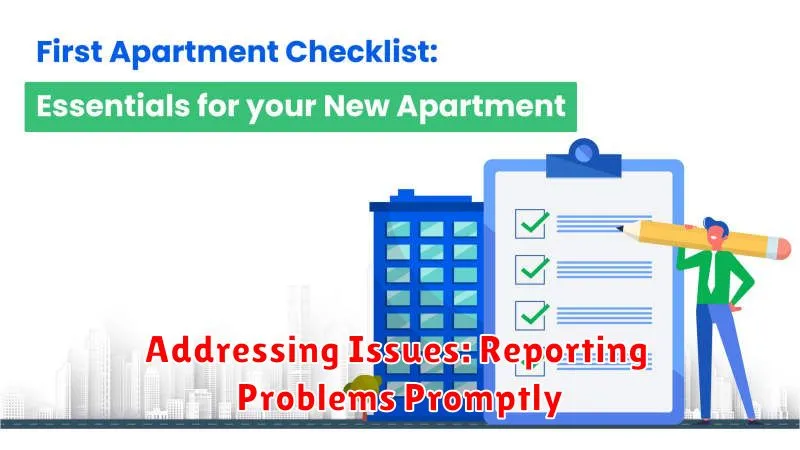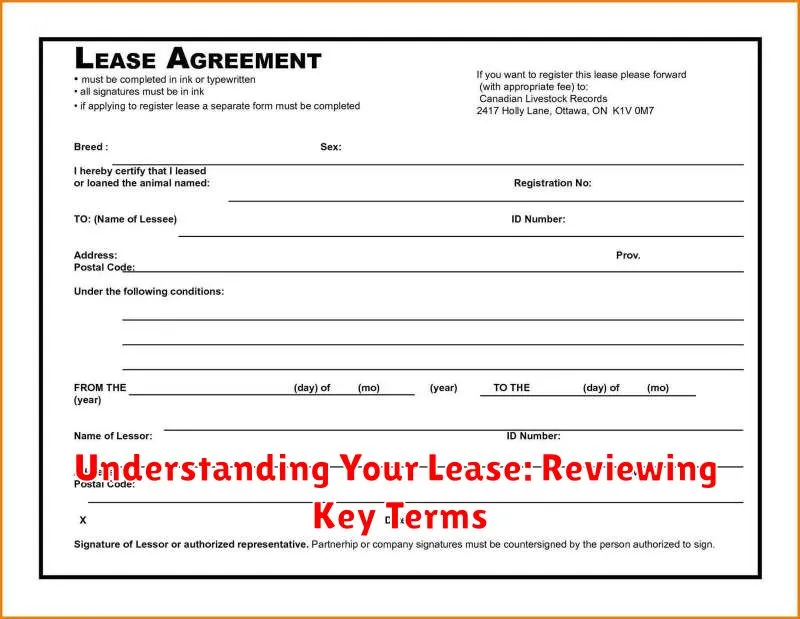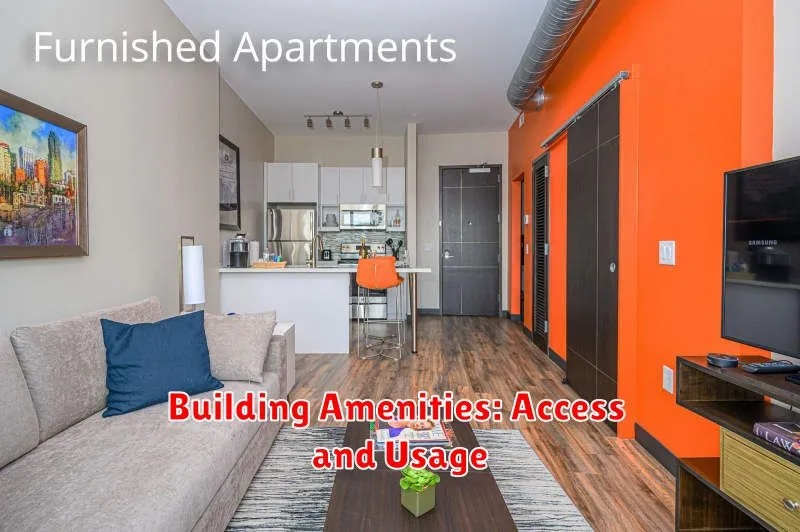Moving into a new apartment is an exciting time, but it can also be overwhelming. With so much to do, it’s easy to miss important steps. To ensure a smooth transition and avoid any surprises, we’ve created a comprehensive apartment move-in checklist specifically for renters. This checklist covers everything from inspecting your new space to setting up utilities, so you can focus on settling in and enjoying your new home.
Before You Move In: Inspect and Document
Before you even start moving your belongings in, it’s crucial to thoroughly inspect the apartment and document its condition. This step will protect you from being held responsible for pre-existing damage. Take the time to walk through the apartment, carefully examining every room and detail.
What to look for:
- Walls: Check for cracks, holes, stains, or peeling paint.
- Floors: Look for scratches, dents, or any loose floorboards.
- Ceilings: Inspect for water damage, cracks, or peeling paint.
- Appliances: Ensure everything works correctly, including the oven, stovetop, refrigerator, dishwasher, and washing machine. Note any existing damage or issues.
- Windows and Doors: Verify they open and close properly, and check for cracks in the glass or damaged frames.
- Plumbing: Test all faucets and drains to make sure they are working without leaks.
- Electrical: Ensure all outlets and light fixtures are functional.
- Smoke detectors and Carbon Monoxide detectors: Verify that they are installed and in working order.
- Security: Check the locks on all doors and windows, including the deadbolt and any security systems.
How to document:
- Take photos and videos: Document any pre-existing damage or issues using your smartphone. Capture clear close-up shots.
- Create a detailed checklist: Prepare a comprehensive checklist to document the condition of the apartment, noting any existing damages.
- Get your landlord to sign off: Once you’ve completed your inspection and documented the condition of the apartment, schedule a walk-through with your landlord. Have them review your checklist and photos, then sign off on the document to acknowledge the apartment’s condition.
By thoroughly inspecting and documenting the condition of your apartment before you move in, you’ll protect yourself from any potential disputes or issues that may arise later.
Utilities and Services: Setting Up Essentials
Before you even think about unpacking, get your essential utilities and services in order. This ensures a smooth transition into your new apartment.
Here’s what you need to do:
- Electricity: Contact the local power company to set up an account in your name. Be prepared with your apartment address and the previous tenant’s account information (if available). You’ll likely need to provide a deposit and choose a payment plan.
- Gas: Similar to electricity, reach out to the gas company to set up service. You’ll need your apartment address and potentially the previous tenant’s information.
- Water and Sewer: In some cities, water and sewer services are bundled with gas or electricity. If not, contact the local water company to set up service.
- Internet and Cable: Research different internet and cable providers in your area. Compare prices, speeds, and bundles to find the best fit for your needs. Don’t forget to check if your apartment building has any pre-existing contracts or provider restrictions.
- Trash Collection: Confirm with your landlord or building management about trash collection services. Understand the schedule and any specific instructions regarding trash disposal.
- Other Services: Depending on your location and needs, you may want to consider services like phone lines, home security, or even laundry services. Make sure you understand the setup process and associated costs.
By taking care of these essential utilities and services before moving in, you’ll ensure a comfortable and hassle-free start to your new apartment living.
Safety and Security: Protecting Your New Home
Moving into a new apartment is exciting, but it’s also important to prioritize safety and security. Before you unpack, take the time to assess your surroundings and make any necessary adjustments to ensure peace of mind.
Start by walking around the exterior of the building. Make sure the windows and doors are secure, and look for any signs of damage or potential vulnerabilities. If you notice any issues, document them with photos and report them to your landlord or property manager immediately.
Inside your apartment, change the locks on all doors and windows. This simple step provides an extra layer of protection against unauthorized entry. Additionally, consider installing a security system, such as a motion-activated alarm or smart home devices, to deter potential intruders.
Before you move in, check if the building has a secure entry system, like a doorman or keycard access. Ask your landlord about any security measures they have in place, such as security cameras or patrols. Familiarize yourself with the building’s emergency procedures, including fire alarms and escape routes.
Remember, your safety and security are paramount. By taking proactive steps to secure your new home, you can enjoy your new apartment with peace of mind.
Inventory and Documentation: Recording Existing Conditions
Before you move your belongings into your new apartment, it’s crucial to take the time to document the existing condition of the unit. This step helps protect you as a renter by establishing a record of any pre-existing damage or wear and tear.
This documentation serves as a valuable resource should any disputes arise with your landlord regarding damage during your tenancy. By taking a thorough inventory and capturing photographic evidence, you can demonstrate the condition of the apartment upon arrival.
Here’s a detailed guide to creating a comprehensive inventory and documenting existing conditions:
Inventory Checklist:
- Walk through every room, carefully inspecting walls, floors, ceilings, windows, doors, cabinets, and appliances.
- Note any existing damage, including scratches, dents, stains, cracks, broken fixtures, or malfunctioning appliances. Be as specific as possible in your descriptions.
- Document the condition of each room, including the presence of working smoke detectors, light fixtures, and electrical outlets.
- Create a written inventory, listing each room and its condition. Be sure to include any pre-existing issues you observe.
Documentation:
- Take photographs of any existing damage or wear and tear, ensuring clear and detailed images.
- Video recordings can also be helpful, particularly for capturing overall apartment condition and showcasing any moving parts or appliances.
- Keep a copy of the inventory and documentation for your records, and consider sending a copy to your landlord for their reference.
By completing this inventory and documentation process, you can ensure a smooth transition into your new apartment and protect yourself against potential disputes regarding damage. Remember to be thorough, detailed, and accurate in your observations and documentation.
Cleaning and Organization: Starting Fresh
Before you even start unpacking, take some time to give your new apartment a thorough cleaning. This will help you start fresh and create a clean slate for your belongings. This is an important step that can make a big difference in your overall satisfaction with your new apartment.
Start by dusting all surfaces, including furniture, shelves, and light fixtures. Then, wipe down all counters and appliances. Don’t forget to clean out the refrigerator and oven, too.
Next, vacuum or sweep the floors. If you have hardwood floors, you may want to mop them as well. And don’t forget to wash the windows and blinds.
Finally, take some time to declutter. If you have any boxes or items that you don’t need, get rid of them. This will help you keep your apartment tidy and organized. It’s also a great opportunity to get rid of items that are taking up valuable space and make your apartment feel cluttered.
By taking the time to clean and organize your apartment, you will make it a more welcoming and enjoyable place to live. Having a clean and organized apartment will help you feel more relaxed and at peace. It also helps you maintain a sense of order and control over your living space.
Maintenance and Repairs: Knowing Your Responsibilities
When moving into a new apartment, it’s essential to understand your responsibilities regarding maintenance and repairs. Knowing who’s responsible for what can prevent misunderstandings and potential conflicts with your landlord.
Your lease agreement will typically outline your responsibilities for maintaining the apartment. Generally, you are expected to keep the unit clean and sanitary, and handle minor repairs like changing lightbulbs or unclogging drains.
Landlords are typically responsible for major repairs, such as plumbing issues, electrical problems, roof leaks, and appliance malfunctions. It’s crucial to communicate with your landlord promptly about any repairs needed. Provide clear descriptions of the problem and allow them reasonable time to address it.
Before moving in, it’s wise to document the condition of the apartment. Take photos or videos of any existing damage or wear and tear. This documentation can serve as evidence if disputes arise regarding repairs or deductions from your security deposit.
Communication with Landlord: Establishing a Good Relationship
A good relationship with your landlord can make your tenancy smoother and more enjoyable. Clear communication from the start is key to setting a positive tone for the duration of your lease.
Start Strong:
- Introduce Yourself: Reach out to your landlord soon after you move in. Let them know you’re eager to be a good tenant and are looking forward to a positive relationship.
- Establish Contact Information: Confirm the best way to reach your landlord for both urgent and non-urgent matters. This can be through email, text, or phone call.
- Read the Lease Agreement: Thoroughly understand your responsibilities and rights as outlined in the lease. This will help you avoid misunderstandings later on.
Maintain Open Communication:
- Be Prompt and Respectful: Respond to your landlord’s inquiries and requests in a timely manner. Always communicate in a polite and professional tone, even when addressing concerns.
- Document Everything: Keep records of all communication, including emails, texts, and phone calls. This helps avoid disputes and ensures everyone is on the same page.
- Address Issues Immediately: If you notice any maintenance issues, inform your landlord promptly. This can prevent small problems from escalating into bigger ones.
Build Trust:
- Pay Rent on Time: Consistent rent payments demonstrate your reliability and commitment to your tenancy.
- Respect the Property: Treat the apartment and its surroundings with care. This shows you value the property and are invested in maintaining it.
- Communicate Clearly: Be open and honest with your landlord about any issues you encounter. This builds trust and ensures smooth problem-solving.
By fostering open and respectful communication, you can establish a strong foundation for a positive and mutually beneficial landlord-tenant relationship.
Moving Day Logistics: Planning for a Smooth Move

Moving day can be overwhelming, but with proper planning, you can ensure a smooth transition into your new apartment. Here’s a breakdown of key logistics to consider:
1. Scheduling & Coordination:
- Confirm move-in date and time: Coordinate with your landlord or property manager for the official move-in time.
- Arrange movers: If you’re using professional movers, book them well in advance and confirm details like arrival time and packing services.
- Notify utilities: Contact utility providers for both your old and new apartments to schedule service connections and disconnections.
2. Transportation & Access:
- Parking: Reserve parking spaces in advance if needed, especially if your new building has limited availability.
- Accessibility: Ensure your belongings can be easily transported from the moving truck or van to your apartment. Consider an elevator, stairs, or any potential obstructions.
3. Organization & Efficiency:
- Packing strategically: Pack essential items like toiletries, bedding, and a change of clothes in easily accessible boxes or bags.
- Label clearly: Label all boxes with their contents and the room they belong to for easy unpacking.
- Plan your unpacking: Prioritize essential items and unpack them first to make your apartment habitable.
By following these steps, you can streamline the moving process and minimize stress on move-in day. Remember to stay organized, communicate clearly, and be prepared for any potential challenges.
Post-Move-In: Final Walkthrough and Documentation

After you’ve moved in and unpacked, it’s essential to conduct a final walkthrough with your landlord. This step is crucial for documenting the condition of your apartment and ensuring there are no pre-existing damages.
Here’s what to do:
- Schedule the Walkthrough: Contact your landlord to schedule a final walkthrough within the timeframe outlined in your lease agreement.
- Thorough Inspection: Meticulously inspect every room, including appliances, fixtures, and windows. Note any pre-existing damages or discrepancies from the original condition.
- Documentation: Take detailed photos or videos of any existing damages or issues. This documentation is vital for dispute resolution in the future.
- Report and Record: Compile a comprehensive list of observed damages, including detailed descriptions and photos. Ensure the landlord acknowledges and signs off on this list.
- Retain Copies: Keep a copy of the signed documentation for your records.
This final walkthrough and documentation process protects you as a renter. It provides evidence of the apartment’s condition upon move-in, preventing any accusations of damage caused by you.
Addressing Issues: Reporting Problems Promptly

One of the most important things you can do as a renter is to be proactive about addressing issues. Don’t wait for problems to escalate – report them to your landlord or property manager immediately. This not only protects you from potential legal ramifications, but also helps to ensure that your living environment remains comfortable and safe.
Here are some tips for reporting problems promptly:
- Document everything. Take photos or videos of any issues, and note the date and time they were discovered. This documentation can be invaluable if a dispute arises.
- Contact your landlord in writing. This could be via email, text, or a formal letter. Keep a copy of all communication.
- Be specific. Clearly describe the problem and where it is located. For example, instead of saying “There’s a leak,” say “There is a leak in the bathroom ceiling near the shower.”
- Follow up. If you haven’t received a response within a reasonable timeframe, send a follow-up message.
By being proactive and following these tips, you can ensure that any issues in your apartment are addressed quickly and efficiently.
Emergency Contacts: Having Important Numbers Handy
Having a list of emergency contacts is crucial when you move into a new apartment. This ensures you have access to essential information in case of emergencies. Here’s what to include in your emergency contacts list:
Landlord: This is the most important number to have. Your landlord should be your first point of contact for any maintenance issues, concerns, or emergencies.
Property Management Company: If your apartment complex is managed by a company, have their contact information handy. They might be able to assist with maintenance requests or address concerns outside of your landlord’s availability.
Local Emergency Services: Keep the numbers for your local police, fire department, and ambulance service readily accessible. You never know when you might need them.
Utilities: Having the contact numbers for your utilities, such as electricity, gas, water, and internet providers, is essential for reporting outages or service issues.
Neighbors: It’s a good idea to get in touch with your immediate neighbors and exchange contact information. They can be invaluable for emergencies or if you need a temporary place to store something.
Friends or Family: Include the phone numbers of close friends or family members in your emergency contacts list. They can offer support and assistance if you need it.
Keep your emergency contacts list readily available. Consider posting it on your refrigerator or creating a digital copy that you can easily access on your phone.
Understanding Your Lease: Reviewing Key Terms

Before signing your lease, it’s crucial to read through it carefully and understand the key terms. This document outlines your rights and responsibilities as a tenant. Pay particular attention to these important clauses:
Lease Period and Renewal: Understand the duration of your lease and the process for renewal. Is it a month-to-month agreement or a fixed term? What are the renewal procedures and deadlines?
Rent and Payment: Clarify the monthly rent amount, due date, and accepted payment methods. Check for any late fees or penalties for missed payments.
Security Deposit: Familiarize yourself with the amount of the security deposit, its purpose, and the conditions under which it will be refunded. Understand the process for claiming any of your security deposit back after you move out.
Pet Policy: If you have pets, carefully read the pet policy. This will detail any restrictions on pet breeds, size, or number, as well as any associated fees or deposits.
Maintenance and Repairs: Understand the landlord’s responsibilities for repairs and maintenance. Is there a specific process for reporting issues? Who is responsible for paying for repairs?
Termination: Review the lease’s provisions for breaking the lease agreement. What are the conditions for early termination and any associated penalties?
Notice to Vacate: Learn about the required notice period for moving out. Ensure you understand the timeline and procedures for vacating the property.
Don’t hesitate to ask your landlord or property manager to clarify any confusing clauses or terms. By understanding your lease, you’ll be better equipped to navigate your tenancy and protect your rights.
Building Amenities: Access and Usage

Before you settle into your new apartment, take some time to understand the building amenities and how to use them. This includes things like the gym, laundry room, pool, and parking. Ask your landlord or property manager for a tour of the amenities and how they work. They should be able to provide you with instructions, schedules, and any rules or regulations. It’s a good idea to take notes and even snap some photos for reference.
Make sure you understand the access procedures for each amenity. Some may require a key fob, a code, or a reservation. Ask about the hours of operation and any fees associated with using the amenities. It’s also wise to inquire about any maintenance schedules or closures for the amenities.
Familiarize yourself with the rules and regulations for each amenity. For example, some gyms might have weight restrictions or require you to wipe down equipment after use. The pool might have rules regarding noise levels or the use of floats and toys. Understanding these rules will help you avoid any conflicts or issues with your landlord or fellow tenants.

